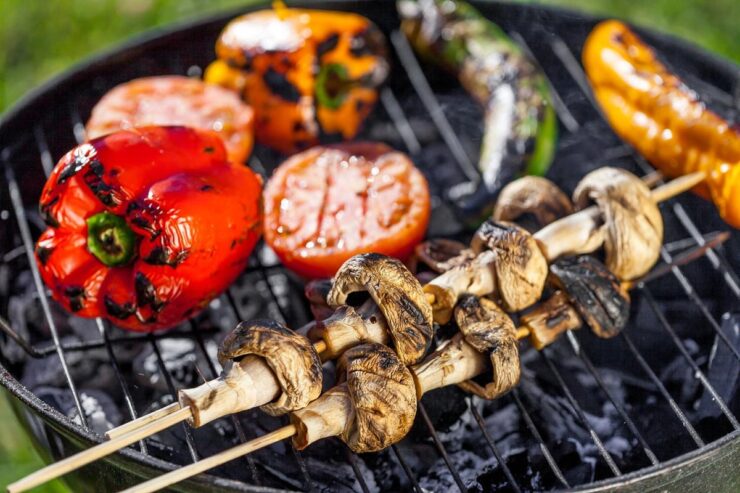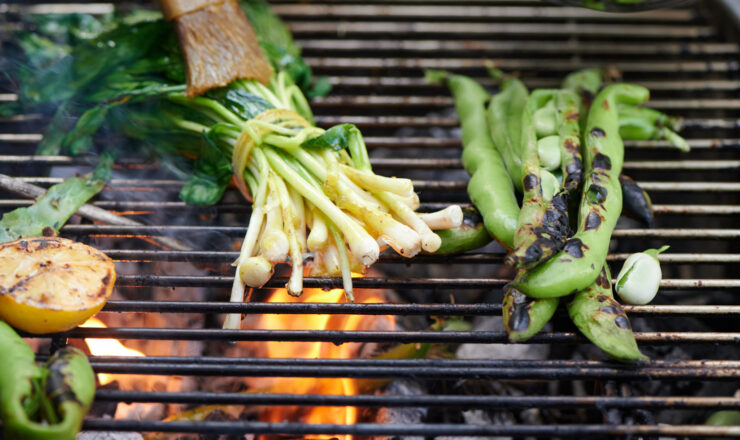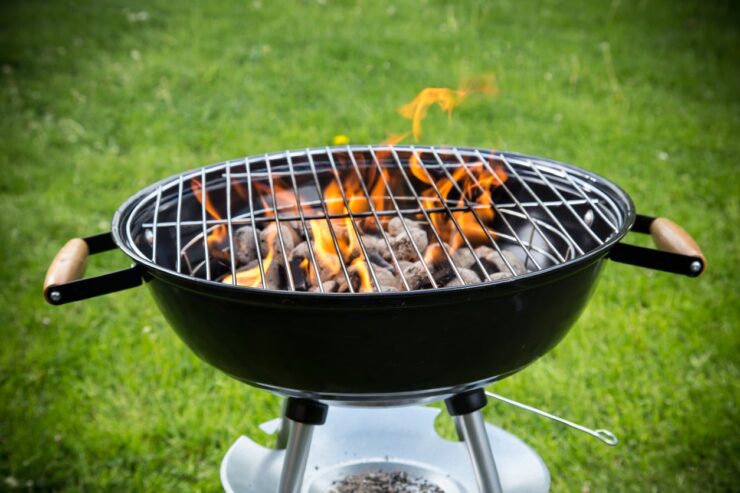Grilling has long been an art form, a culinary adventure that brings people together in the pursuit of smoky flavors and sizzling perfection. And yet, as we stand before our grills, armed with tongs and spatulas, there exists a mysterious code that often leaves us puzzled; the temperature settings. Among the enigmatic options, “medium heat” stands as a gateway to unlocking the secrets of grilling mastery.
In this exploration, we embark on a quest to crack the temperature code of your BBQ, specifically deciphering the elusive realm of medium heat. By unraveling its nuances, understanding its implications, and uncovering the methods behind achieving and maintaining this ideal grilling temperature, we aim to equip you with the knowledge and confidence to elevate your grilling game.
So, don your aprons, stoke the flames, and join us on this flavorful journey as we demystify the concept of medium heat and unlock a world of grill-fired possibilities.
Grilling Temperature Basics: Low, Medium, and High Heat

When it comes to grilling, understanding the different heat levels is crucial for achieving the desired doneness and flavor. Grilling temperatures are generally categorized as low, medium, and high heat, each serving its own purpose in the cooking process.
Low Heat
Low heat is ideal for delicate foods that require gentle cooking or for maintaining the warmth of cooked food without further cooking. This temperature ranges from 250°F to 325°F (121°C to 163°C) and is commonly used for slow-cooking or smoking dishes such as ribs or brisket.
Medium Heat
Medium heat is the sweet spot for many grilling enthusiasts, offering a balance between cooking time and flavor development. This temperature typically falls within the range of 350°F to 400°F (177°C to 204°C). Medium heat allows for proper browning and caramelization, ensuring a delicious sear on the outside while keeping the inside moist and tender.
High Heat
High heat, ranging from 400°F to 550°F (204°C to 288°C), is perfect for quickly searing meats and achieving that coveted charred exterior. This intense heat creates a beautiful crust while locking in the juices, making it ideal for steaks, burgers, or vegetables that require a short cooking time.
Achieving Medium Heat on a Grill

Now that we understand the significance of medium heat, let’s explore different methods to achieve and maintain it on your grill.
- Gas Grill: For gas grills, preheating is essential to reach and maintain medium heat. Start by turning on all the burners to their highest setting and close the lid. Once the grill reaches the desired temperature, reduce the heat by adjusting the burners to medium. This allows for consistent heat throughout the cooking process.
- Charcoal Grill: When using a charcoal grill, medium heat can be achieved by lighting the coals and letting them burn until they are covered with a layer of gray ash. Once the coals have reached this stage, distribute them evenly across the charcoal grate, creating a medium-sized layer. This arrangement provides a steady heat source for medium-heat grilling.
- Dual-Zone Grilling: Dual-zone grilling is a technique that allows you to create different heat zones on your grill. To achieve medium heat, light all the burners or coals on one side of the grill while leaving the other side unlit. This setup provides a hot zone for searing and a medium-heat zone for more controlled cooking. Place your food accordingly to achieve the desired doneness.
Expert Tips for Grilling at Medium Heat
To further enhance your grilling experience at medium heat, consider these expert tips:
- Preheating: Always preheat your grill to the desired medium heat temperature before placing any food on the grates. This ensures even cooking and prevents sticking.
- Oil the Grates: Brushing the grill grates with oil before cooking helps prevent food from sticking and promotes those sought-after grill marks.
- Use a Thermometer: Invest in a reliable meat thermometer to ensure accurate cooking temperatures. This allows you to monitor the internal temperature of your food and avoid overcooking or undercooking.
- Adjusting the Lid: Keep the lid closed as much as possible while cooking at medium heat. This helps to retain heat and creates a convection effect, allowing your food to cook evenly.
- Indirect Heat: For larger cuts of meat or foods that require longer cooking times, consider using indirect heat. This involves placing the food away from the direct heat source, allowing it to cook slowly and evenly.
- Flip with Care: When grilling at medium heat, avoid flipping your food too frequently. Allow it to seat properly on one side before flipping to the other. This helps to develop a nice crust and seals in the juices.
- Resting Time: Once your food reaches the desired doneness, remove it from the grill and let it rest for a few minutes before serving. This allows the juices to redistribute, resulting in a more flavorful and tender final product.
- Adjusting the Lid: Keep the lid closed as much as possible while cooking at medium heat. This helps to retain heat and creates a convection effect, allowing your food to cook evenly.
Experimenting and Perfecting Your Medium Heat Grilling
Grilling is both an art and a science, and achieving the perfect medium heat may require some experimentation. Factors such as outdoor temperature, wind conditions, and the type of grill you use can influence the cooking temperature.
Keep a grill journal to record your grilling experiences, including the techniques, temperatures, and results obtained. This will help you track your progress and make adjustments for future grilling sessions.
Don’t be afraid to try new recipes and ingredients while grilling at medium heat. Different meats, vegetables, and marinades can yield varying results, allowing you to explore a wide range of flavors and textures.
Conclusion
Understanding medium heat on a grill is essential for achieving perfectly cooked and flavorful BBQ. By grasping the temperature code of your BBQ and implementing the tips and techniques shared in this article, you can confidently master the art of medium-heat grilling.
Experiment, take notes, and refine your grilling skills to create memorable meals that will impress your family and friends. Whether you’re grilling tender steaks, juicy burgers, or deliciously charred vegetables, medium heat will be your key to unlocking a world of culinary possibilities on your grill.
So, fire up your grill, embrace the medium heat, and enjoy the sizzling delights of BBQ perfection.

